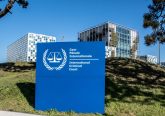This year, we celebrate the eight-hundredth anniversary of one of the most revered documents in English history. On 15 June 1215 at Runnymede (a small meadow outside of London, marking the midpoint between two armies locked in civil war) King John set his seal on Magna Carta – the ‘great charter’ that has become synonymous throughout the world with opposition to arbitrary rule, and with the protection of individual rights and liberties. But what, exactly, was Magna Carta?
Few of John’s contemporaries could have guessed at its enduring and universal significance. Magna Carta was the product of a specific breakdown in feudal authority. It was a peace treaty and a political settlement, aimed at bringing to an end months of conflict between the despotic king and his defiant subjects. But the peace failed within weeks, plunging England back into ruinous civil war. And the settlement remained a dead letter until John’s death and the accession of his nine-year-old son (Henry III) the following year.
The revived charter was presented as a solution to the crisis. Henry’s advisers hoped to end the conflict by signalling the boy-king’s desire to rule in cooperation with his barons, according to the terms of Magna Carta and the associated Charter of the Forests (created 1217). And this time, the peace held – making the charter an important milestone in English medieval history. Magna Carta was repeatedly reissued over the course of the following century, as the 1225 version passed onto the statute books and became the authoritative standard handed down to future generations.
Nevertheless, there are many reasons for questioning Magna Carta’s iconic status. Though the settlement clearly curtailed the arbitrary rule of English kings, it did little to resolve the recurring conflict between monarch and nobility. Moreover, by modern standards, the charters were both extremely limited documents – overwhelmingly concerned with feudal administration, with little relevance to those living outside the context of medieval England. So why do we celebrate them today?
The great charter of 1215 was never intended to start a legal revolution, or bring about a radical change in society. It drew on a precedent established by the coronation charter of Henry I of England over one hundred years before (as well as a number of other, more recent charters issued in southern France and Spain) pledging to rule according to custom and agreed standards of good lordship. These charters all aimed to curtail arbitrary rule, but could only be guaranteed by the force of royal oath. In medieval Europe, kings often broke their oaths, rendering charters only partly effective. By appealing to the tradition of royal charters, the rebels were attempting to seek redress for their grievances within a well-established context.
But there was also a novel element at play. The professionalization of the English legal system under the rule of John’s father (Henry II) had created a new and menacing efficiency in the administration of royal justice. The king sat at the apex of the legal system, guaranteeing justice to his subjects, without being subject to the laws that he interpreted and administered. The king could therefore use the increasing prerogative power of the monarchy to raise revenue by arbitrarily adjusting fines, taxes, and feudal obligations (or ‘incidents’). John’s father and his brother began this practice during their reigns, but it was John’s flagrant abuse of the system in order to fund his costly (and chronically unsuccessful) wars in France that alienated his barons and ultimately precipitated a political crisis.
The recognition that John – a notorious oath-breaker and arbitrary ruler – could not be constrained by the conventional mechanisms for limiting royal power had a broad impact, both on Magna Carta, and on its aristocratic champions. Clause 61 of the 1215 charter famously mandated that a committee of twenty-five barons should be empowered to incite the rest of the kingdom to take up arms against the king if he breached the terms of Magna Carta. Although this clause was written out of subsequent versions issued by Henry III, the threat of armed enforcement remained. From this point onward, the ruler would be subject to the law; and if any king refused to accept the legal constraints on his power, his subjects were empowered and incentivised to overthrow him and seek a better alternative. (The political reality reflected this new legal principle: in 1216 the rebel barons had already found an alternative ruler – Louis, the son of the King of France – and were fighting to install him as King of England when Magna Carta was hastily re-issued by Henry’s government.)
Other elements undoubtedly played a key role in defining and reshaping Magna Carta. John’s awful relationship with the Catholic Church (resulting in a break with the Church in Rome lasting from 1209 to 1214) and his subsequent submission to the Pope as a feudal vassal stirred up antagonism among the largely independent clergy of England. John’s actions created an alliance of clergy and nobility that insisted on protection for the English Church as Clause 1 of Magna Carta. Widespread resentment of John’s extension of the royal forests (land that fell under a more exacting royal jurisdiction) united lords, free men, and the unfree serfs in opposition to the king. And perhaps most significantly, John’s alienation of the city of London lost him a cornerstone of support that proved decisive in the ongoing civil war. On 17 May 1215, free men and traders of the city – dismayed by the king’s disruptive wars in France – seized the Tower of London and the treasury for the rebel cause, effectively denying the king financial support and security from foreign invasion, and forcing him into a timely settlement. These commoners played a fundamental role in the Magna Carta story, and left their mark on Magna Carta in Clause 13, guaranteeing London and other cities ‘ancient liberties and free customs’. (Ironically, today many people would maintain that the formal powers held by the City of London represent one of the greatest threats to democratic sovereignty – illustrating the equivocal nature of such constitutionally-protected corporate rights.)
Ultimately, the drive towards Magna Carta was less defined by the pursuit of universal rights and liberties, than by a united desire to redress grievances and safeguard customary privileges with a secure and binding settlement. But this generated a substantial change; a precedent for the victory of the law of the community over the arbitrary exercise of power.
Magna Carta was not intended as a constitutional framework or a basic law. It was a political document – and this is reflected in the vagueness of many of its most celebrated clauses. The widely cited Clause 39, which determined that ‘No free man shall be seized or imprisoned…except by the lawful judgement of his peers or by the law of the land’ exemplifies the deliberate ambiguity of the charter. ‘Lawful judgement’ was never clearly defined; and ‘the law of the land’ was a confusing qualification in a country of overlapping and incomplete feudal jurisdictions. Nevertheless, these terms allowed the king and the rebels to compromise on a vague legal settlement, which both parties could later attempt to interpret in line with their own political standpoint. And the rebels and their successors were not reluctant to use their interpretations of Magna Carta to push for greater freedoms in the political sphere. Taken independently, Clause 39 of Magna Carta does not guarantee modern standards of justice. But in the fourteenth century, Parliament clarified Clause 39, interpreting ‘law of the land’ to mean due process of law and trial by jury. In the eighteenth century, radical campaigners like John Wilkes used these principles to challenge the oppressive powers of the British government, campaigning for individual rights and protections from legal tyranny.
These political rights would gradually be extended to all members of society. Magna Carta is often criticised for its preoccupation with the minutiae of feudal administration – with the immediate political priorities of its aristocratic champions. It is true that the document was mainly concerned with baronial privilege, and that even the most general terms of the charter only applied to free men (excluding the majority of unfree men – or serfs – living in England at the time; as well as all women). Nevertheless, the charter represented a political platform, which successive generations used to campaign for greater legal protections for all. The first step towards legal equality came in the Charter of the Forests (1217) – which addressed the legal corruption plaguing serfs, commoners, and nobility alike, and deliberately extended rights and protections to ‘all men’, free or unfree. In the fourteenth century, Parliament rewrote Magna Carta in this vein, extending its protections to all men. And in the twentieth century, movements pressing for colonial liberation and female emancipation furthered the demand for equal legal protection, building campaigns for human rights on the back of the promise of Magna Carta.
The struggle that began with Magna Carta in 1215 transformed the political landscape. It enshrined the principle of individual rights, and allowed subjects to challenge arbitrary authority. The great charter also set a precedent for political participation, stating that lords and free men held the right to consultation in matters of taxation. This principle carried the seeds of Parliamentary government, which flourished briefly in 1265 under the leadership of Simon de Montfort, and grew throughout the following centuries into the defining principle of our political constitution. In the seventeenth century, Sir Edward Coke made Magna Carta the cornerstone of the Parliamentarian critique of the divine right of kings; and the terms of the charter were used to challenge Charles I’s revival of ‘Ship Money’ and other forms of direct royal taxation. Magna Carta inspired the Parliamentarian cause during the English Civil War, as well as the Patriot cause during the American Revolution, and it has become iconic because of its symbolic value in the move towards popular political engagement.
Thus, Magna Carta – a medieval political settlement, which was never intended to radically transform society – came to stand for representative government, the protection of human rights, and the pursuit of liberty. Though the majority of Magna Carta’s clauses have since been repealed from British statute books (only Clauses 1, 13, 39 and 40 remain), what Magna Carta stands for, and the way that it has been used, are certainly causes for celebration in this eight-hundredth anniversary year.
This post is part of our Great Charter Convention series, hosted in collaboration with Open Democracy, IPPR and the University of Southampton.







No Comment